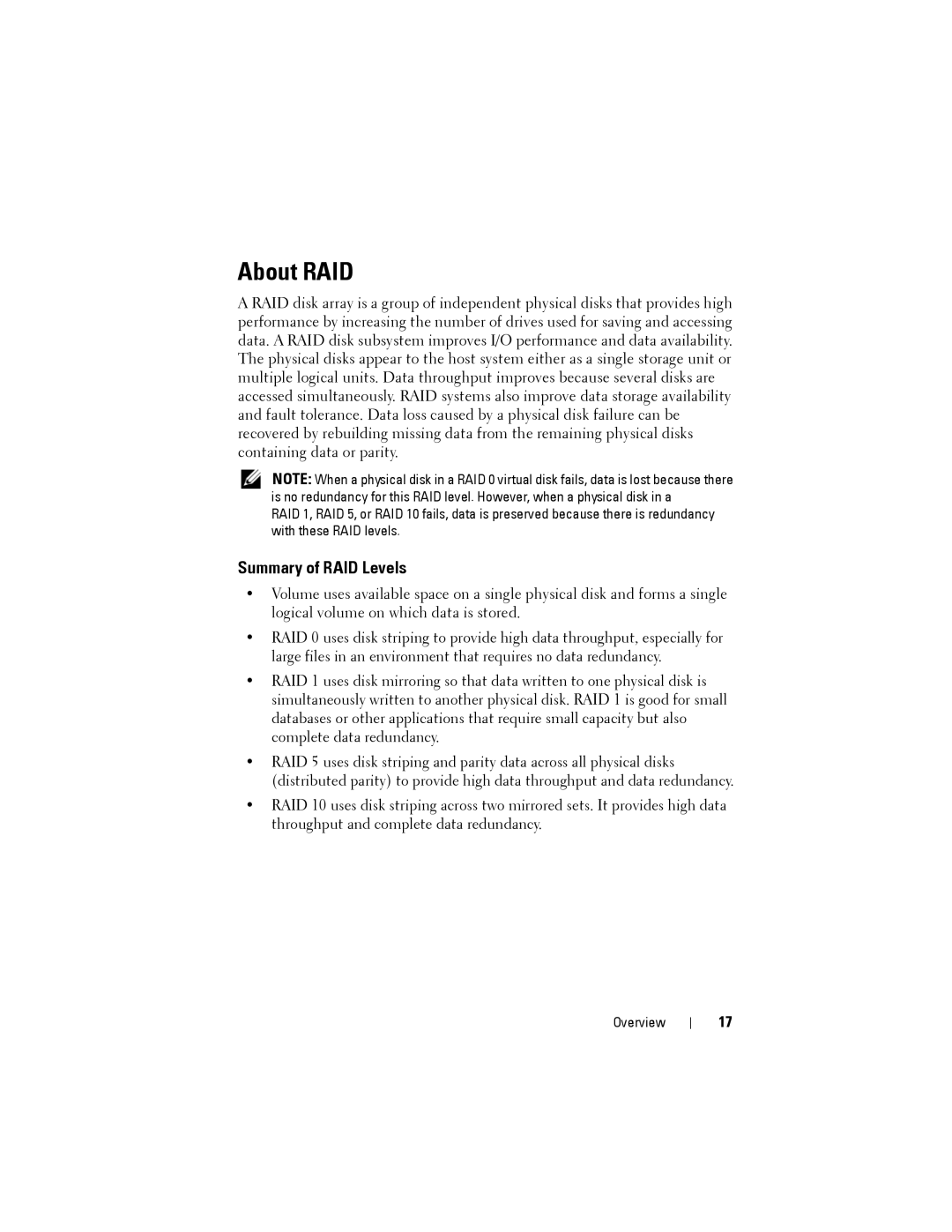
About RAID
A RAID disk array is a group of independent physical disks that provides high performance by increasing the number of drives used for saving and accessing data. A RAID disk subsystem improves I/O performance and data availability. The physical disks appear to the host system either as a single storage unit or multiple logical units. Data throughput improves because several disks are accessed simultaneously. RAID systems also improve data storage availability and fault tolerance. Data loss caused by a physical disk failure can be recovered by rebuilding missing data from the remaining physical disks containing data or parity.
NOTE: When a physical disk in a RAID 0 virtual disk fails, data is lost because there is no redundancy for this RAID level. However, when a physical disk in a
RAID 1, RAID 5, or RAID 10 fails, data is preserved because there is redundancy with these RAID levels.
Summary of RAID Levels
•Volume uses available space on a single physical disk and forms a single logical volume on which data is stored.
•RAID 0 uses disk striping to provide high data throughput, especially for large files in an environment that requires no data redundancy.
•RAID 1 uses disk mirroring so that data written to one physical disk is simultaneously written to another physical disk. RAID 1 is good for small databases or other applications that require small capacity but also complete data redundancy.
•RAID 5 uses disk striping and parity data across all physical disks (distributed parity) to provide high data throughput and data redundancy.
•RAID 10 uses disk striping across two mirrored sets. It provides high data throughput and complete data redundancy.
Overview
17
